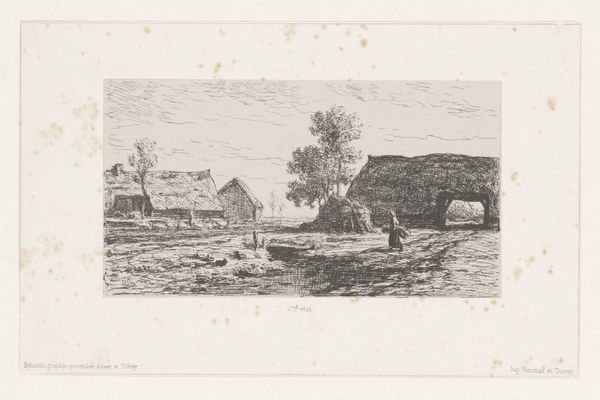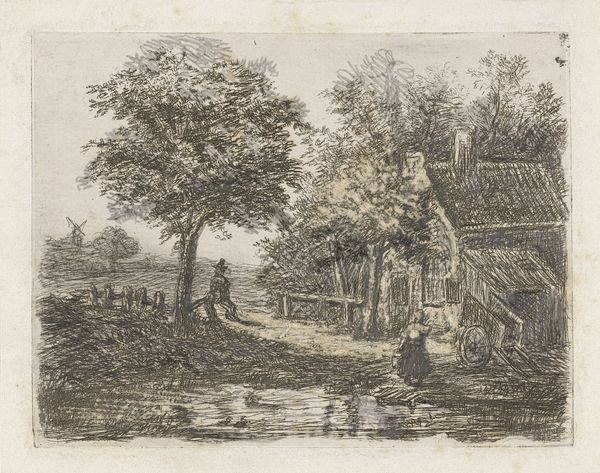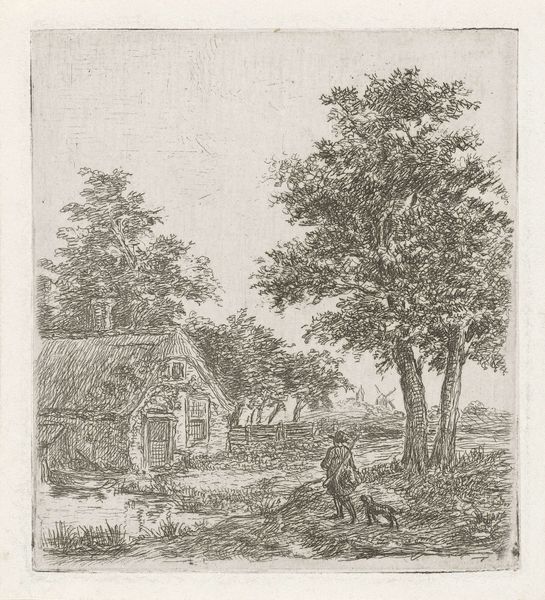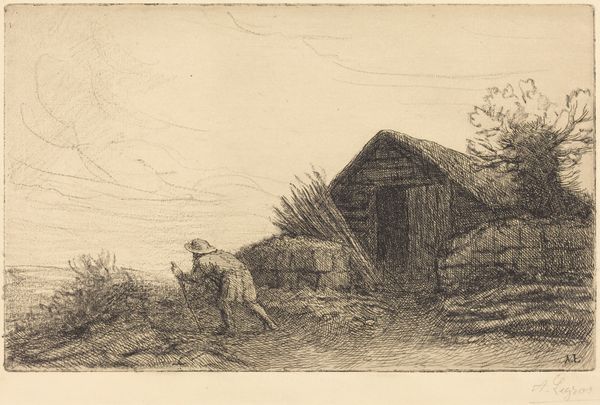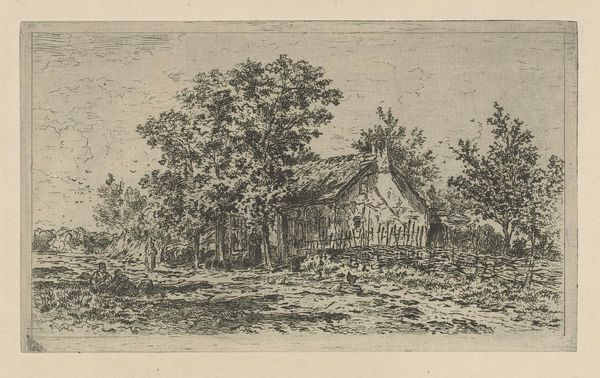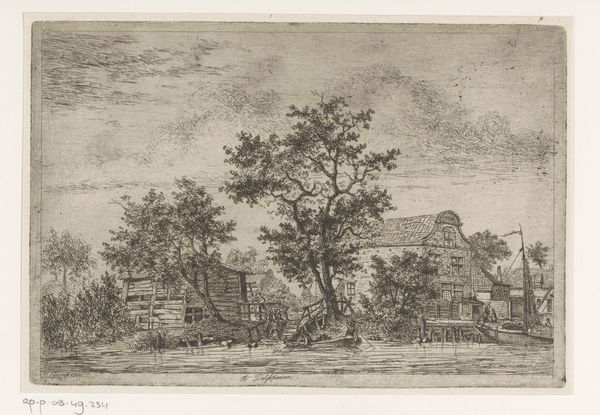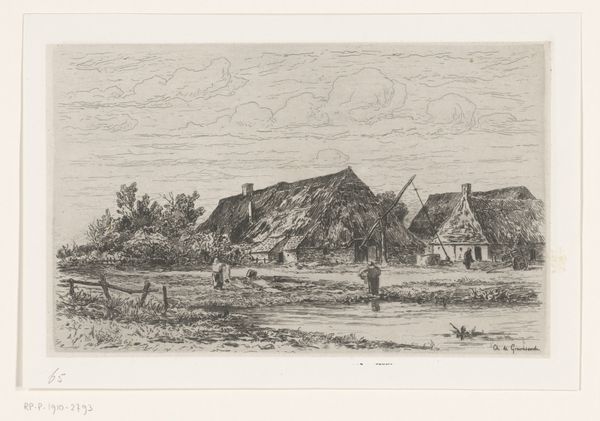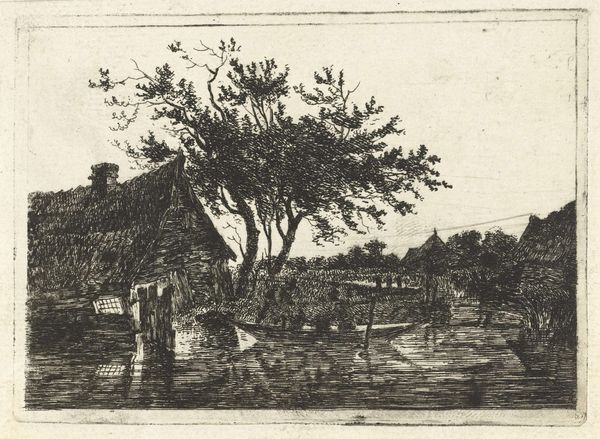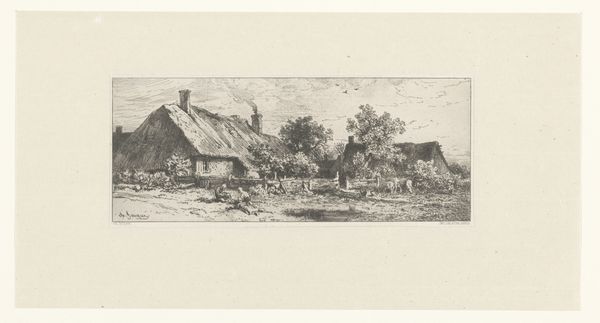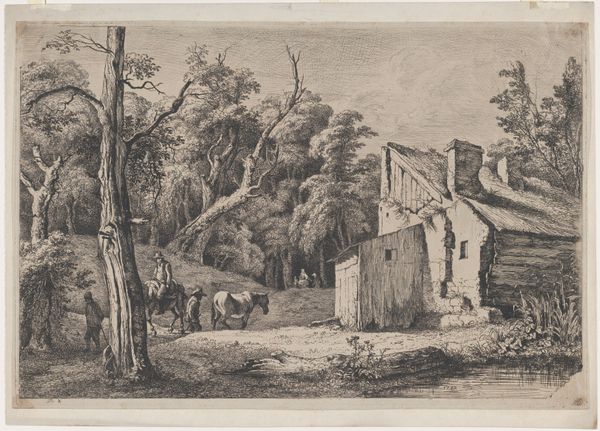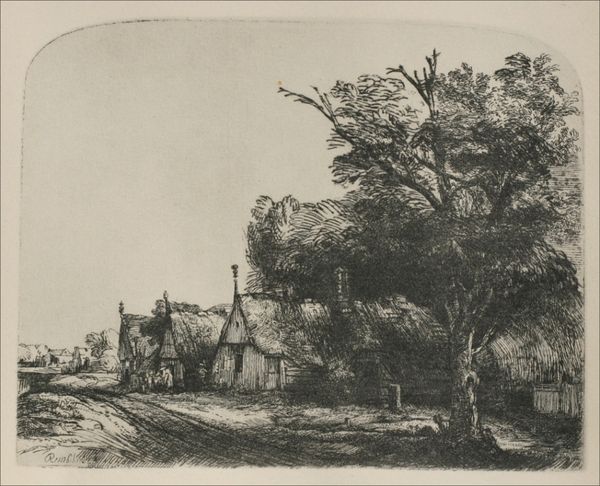
drawing, print, etching
#
drawing
# print
#
etching
#
landscape
#
romanticism
#
genre-painting
Dimensions: Sheet: 6 1/8 × 7 3/4 in. (15.5 × 19.8 cm) Plate: 3 15/16 × 5 11/16 in. (10 × 14.5 cm)
Copyright: Public Domain
Curator: Here we have Charles Jacque's "Landscape with Well," created in 1845. The print work in etching invites us to examine a scene of rural life. Editor: It's wonderfully bleak, isn't it? A stark, almost melancholic stage for daily ritual. The heavy sky weighs down on the humble buildings and laboring figures. It is all shades of grey. Curator: Right. Jacque, deeply entrenched in the Barbizon school, centered on depicting labor within its direct relation to the surrounding landscape, rejecting academic and idealistic landscapes. Editor: Which makes it compelling, doesn’t it? Seeing how work shapes lives and is in turn molded by the very landscape. It's hard not to consider class. Curator: Consider the technique as well: etching. Lines created by acid biting into the metal plate. It democratizes art-making through replicability. These were widely available images consumed by the emerging middle class. Editor: I always marvel at the sheer labor in that replication. Craft meets art, a beautiful entanglement. The way light filters—or perhaps fails to filter—through those wispy, hand-etched clouds is captivating, too. It speaks volumes, literally, about the everyday. It’s quiet, honest. Curator: We see the marks of labor—on the land, in the architecture, even within the printmaking itself. The composition places the well, the crucial instrument for a sustainable daily life, as its center, drawing lines to laboring figures. Editor: I find a somber beauty here. Like witnessing a moment suspended, but thick with unspoken narratives. It’s romanticism, stripped of its theatrical excesses, leaving only what feels human. Curator: Precisely, it encourages reflection on the simple acts of obtaining resources, the very support and sustenance for human life as it is interwoven to its environment. Editor: It leaves you contemplating how landscapes hold and mirror our own toil and existence. Curator: Exactly. Jacque gives form to that reflection through line, material, and social consciousness.
Comments
No comments
Be the first to comment and join the conversation on the ultimate creative platform.
